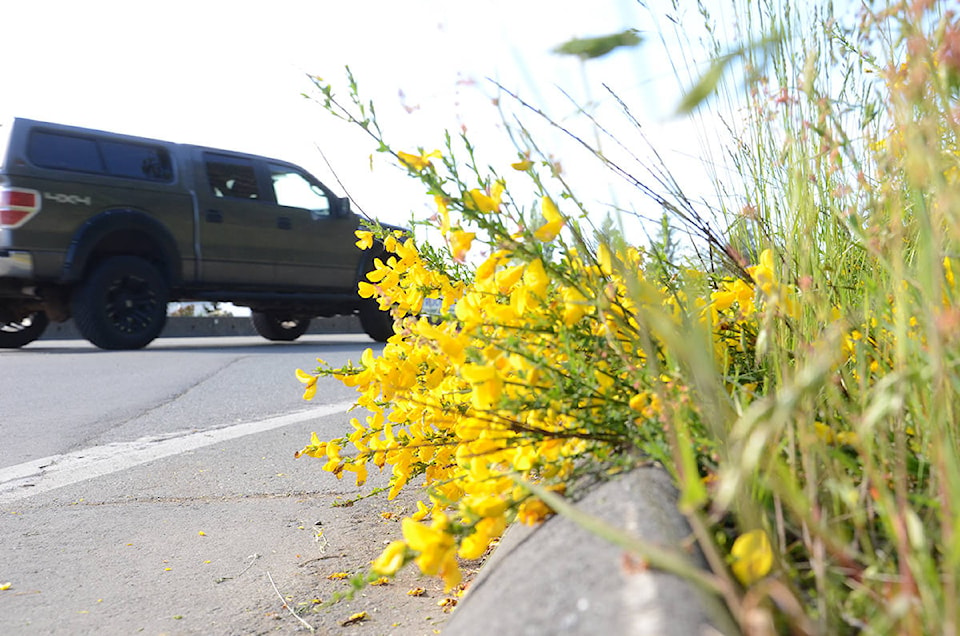As sure as spring comes, so does the Scotch broom.
The familiar golden flowers of the invasive plant have been out in recent weeks in ditches, fields and other locations around the region.
Locally, Comox Valley Broombusters make it their task each year to go out and try to rid the area of the plant. This year, the work is still happening, though it’s happening in a different way.
Often, Broombusters hosts events at which members of the public can come down to help and learn the best way to remove the plant as a way to reduce its spread.
“Sometimes I get 15 new people come out,” says organizer Bev Agur.
However, with pandemic restrictions in place now, Agur is relying on people who have already volunteered and know how the cut out the plant. Now is not the time to show new recruits, as Agur says she would need to demonstrate how to cut the plant up close.
“This year, we pretty much relied on our volunteers from the past,” she says.
This is instead of events or regular organized cuts. Agur has told the volunteers to get their tools and head out to remove the broom and keep her posted about their efforts.
Broom is an invasive plant that spreads rapidly and forces out native plants. It reduces biodiversity and prevents forest re-growth. It can cause allergies and be toxic to grazing animals. It is flammable and changes soil chemistry. The plant was first brought to Vancouver Island in 1850 and has spread across the Pacific Northwest. A single plant can produce up to 18,000 seeds that remain viable in the soil for several decades.
The time of the year when the plants produce flowers is a key time to go on the offensive. For one thing, they are impossible to miss, but the real reason is that taking them out while flowering leaves the root system vulnerable, making the plant easier to destroy.
“The energy is in the flower,” Agur says.
Broombusters has made progress toward removing many of the plants, such as a stretch of Ryan Road between the auto dealerships and Anderton Road, but the plants can re-appear in areas.
“We have a lot of places we cut in the past that we need to go back to,” Agur says.
While they’ve avoided events for new recruits they have gotten together a few times this spring, through April and May, in locations that are large enough for people to work with plenty of space in between. This included a stop at No. 1 Japanese Town in Coal Creek Historic Park in Cumberland on May 9, with a return trip to the area at the end of the month.
Broombusters started in 2006 and is made up entirely of volunteers. There are branches throughout Vancouver Island. For more information, see http://www.broombusters.org/comox-valley/.
